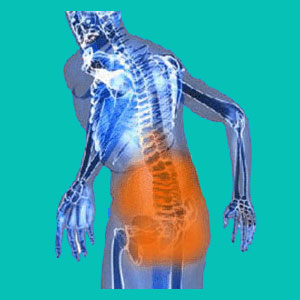
Walking for herniated discs is surely one of the most easy to perform conservative treatment options and may be especially effective at temporarily reducing pain due to a herniated disc in the lower back. Walking is a low impact form of exercise which can be enjoyed by virtually every patient with a disc condition.
One of the major problems with chronic or recurrent pain is the incidence of diminished physical capacity. Patients fear activity, so they stay sedentary and suffer a variety of problematic health issues, including weight gain, reduced cardiovascular functionality and a slower metabolism. Walking can help patients to get the exercise they need without too much fear of hurting themselves.
This dialog concentrates on exploring the benefits and limitations of walking as a herniated disc care practice.
Walking for Herniated Discs Usefulness
Walking is a form of herniated disc exercise therapy. It is low impact and able to be performed virtually anywhere. While walking will not correct defects in the spinal anatomy, it may provide relief for many people suffering with a diagnosed herniated disc condition. The reason for this symptomatic alleviation is simple: Walking increases regional circulation, and therefore oxygenation of painful tissues. This can provide pain control in 2 different ways. Increased circulation combined with exercise will generate and circulate natural pain management chemicals, like endorphins. This will help virtually any type of chronic pain condition to improve, at least temporarily. Next, it has been established that many herniated discs do not actually cause chronic back or neck pain, and ischemia might be the true root causative process in some patients.
Patients who enjoy considerable relief using walking, or any form of exercise therapy, may be suffering from oxygen deprivation issues and not symptoms stemming directly from the incidental bulging disc.
Walking as a Bulging Disc Therapy
Walking is often prescribed for herniated disc patients as part of a physical therapy program. Why this therapy is so popular is not exactly clear, since most doctors do not have a logical reason for prescribing exercise treatment. However, they realize that exercise is an effective method of pain control for many patients, despite the fact that walking will not do anything to resolve the bulging disc.
Medical doctors do not generally subscribe to the high incidence of ischemic disc pain, since many oxygen deprivation syndromes are often driven by a psychosomatic causation.
This idea is simply beyond their training and defies the generally Cartesian philosophy so dear to modern medical science. With this limited scope and small mindedness, it is no surprise that the majority of herniated disc treatments are symptomatic at best and completely ineffective at worst.
Walking for Herniated Discs Expectations
Walking is a terrific activity at any stage of life. I love to walk and do so almost every day, either out in the world or inside on the elliptical trainer. Walking is a good time to think and can also be very beneficial in this regard.
Remember that some chronic back or neck pain is the result of emotionally-induced stresses relating to repressed subconscious issues. If you can use the time spent walking to delve into your psychological self, you can accomplish twice as much with the time spent exercising.
If you are going to walk for treating a herniated disc, or any form of back pain, be sure to do it right. Walk on an elliptical or treadmill, or find a safe location outside. Do not walk in traffic or in inclement weather. Shopping malls and boardwalks make great areas to walk, as do running tracks and other flat and relatively soft surfaces. Walking on concrete is the hardest on your joints, so be careful if this is your only option.
In summary, walking may be a beneficial conservative option to explore. Even if it does not provide relief from your disc symptoms, it will surely enact other positive changes in your body and will facilitate greater and more vigorous activities over time, as part of a rehabilitation program.
Herniated Disc > Herniated Disc Exercises > Walking for Herniated Discs





